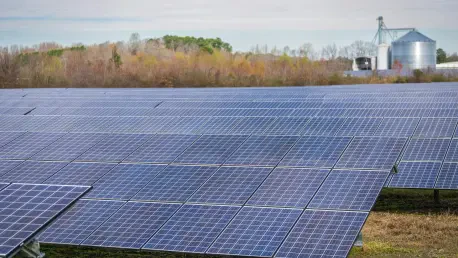As the clean energy sector navigates a complex landscape of new legislation and regulations, few voices carry the weight and insight of Christopher Hailstone. With a robust background in energy management, renewable energy, and electricity delivery, Christopher serves as a trusted expert on grid reliability and security. Today, we dive into the intricacies of the Foreign Entity of Concern (FEOC) rules under the One Big Beautiful Bill Act (OBBBA), exploring their impact on clean energy developers, the challenges of compliance, and the urgent need for clarity from the Treasury Department. Our conversation also touches on how these rules affect industry dynamics, from small developers to shifts in tax credit preferences.
Can you start by explaining what the Foreign Entity of Concern (FEOC) rules are under the One Big Beautiful Bill Act and how they differ from earlier regulations?
Absolutely, Ava. The FEOC rules under the OBBBA are a set of restrictions aimed at limiting the involvement of entities tied to specific foreign countries—think China, Russia, North Korea, and Iran—in the clean energy sector. These rules build on provisions from the Inflation Reduction Act (IRA), which initially focused on clean vehicle tax credits. The OBBBA expands that scope significantly, applying FEOC restrictions to key tax credits like the 45X advanced manufacturing credit, the 45Y production credit, and the 48E investment credit. Unlike the IRA’s narrower focus, this broader application means more projects and technologies, like wind and solar, are now under scrutiny for foreign ties, making compliance a much bigger deal for developers.
Why is the clean energy industry so eager for clear guidance from the Treasury Department on these FEOC rules?
The industry is desperate for clarity because the current ambiguity creates a lot of uncertainty in planning and investment. Developers are grappling with questions about what exactly constitutes a tie to a foreign entity of concern and how to ensure they’re not inadvertently violating rules. Without clear guidelines, there’s a risk of missteps that could jeopardize tax credits or lead to penalties down the line. I’d say the urgency is high—every day without guidance delays projects and increases costs as companies try to navigate this murky landscape. The Treasury has signaled this is a priority, but the sooner we get detailed rules, the better.
How do the FEOC rules define connections to foreign entities, and what are some of the specific thresholds or factors involved?
The FEOC rules lay out specific criteria for what qualifies as a problematic tie to a foreign entity. For instance, if a single shareholder from a restricted country owns 25% or more of a company, that’s a red flag. It gets more complex with scenarios like multiple shareholders from those countries owning 40% combined, or if 15% of a company’s debt at original issuance is held by lenders from those nations. Beyond ownership, licensing agreements with entities from restricted countries can also render a supplier or partner a prohibited entity. These thresholds aim to prevent influence from certain foreign actors, but they’re tricky to apply in real-world business structures where ownership and agreements aren’t always transparent.
What challenges do developers face in identifying whether a supplier or partner might be tied to a foreign entity of concern?
It’s a real headache for developers. The biggest challenge is the lack of visibility into the ownership or debt structures of their suppliers and partners. You might be working with a company that looks clean on the surface, but digging deeper could reveal a significant stake held by a restricted foreign entity or a licensing deal you weren’t aware of. Right now, there aren’t robust tools or standardized processes to help with this—it’s often a manual, time-consuming effort to conduct due diligence. Without clear guidance or databases to reference, developers are left piecing together information, which feels like a guessing game at times.
What do you see as the most significant hurdles for developers trying to comply with these FEOC rules?
The hurdles are substantial, primarily because the rules are so complex and layered with potential pitfalls. Developers have to spend a lot of time and money on legal and compliance efforts to ensure they’re not crossing any lines. I wouldn’t say the rules are necessarily too strict in their intent—limiting certain foreign influence makes sense—but their application is incredibly complicated. Every ownership structure, debt agreement, or partnership needs thorough vetting, which adds significant costs and delays to projects. For many, it’s not just about avoiding violations; it’s about proving compliance, which is a whole other challenge.
How does the administrative burden of these FEOC rules impact clean energy companies on a practical level?
The administrative burden is a huge drain on resources. Companies have to compile detailed documentation on ownership, debt, and partnerships to demonstrate they’re not tied to a prohibited entity. This means endless paperwork, legal reviews, and sometimes third-party audits just to satisfy compliance requirements. On a day-to-day basis, it slows down decision-making and stretches project timelines as teams divert focus from development to record-keeping. For some, especially smaller firms, this can mean the difference between moving forward with a project or stalling out entirely due to the sheer workload.
In what ways do these FEOC rules disproportionately affect smaller developers compared to their larger counterparts?
Smaller developers are hit hardest because they simply don’t have the same resources as larger players. Big companies often have in-house legal teams and compliance experts to handle the intricacies of FEOC rules, whereas smaller firms might struggle to afford outside consultants or dedicate staff to these tasks. This disparity can make it tougher for smaller developers to compete, as they risk falling behind on projects or missing out on tax credits due to compliance errors. There’s a real concern that these rules could squeeze smaller players out of the market or force them to merge with larger entities just to survive.
How are these rules influencing industry trends, particularly in terms of preferences for different types of tax credits?
We’re seeing a noticeable shift in how developers and investors approach tax credits because of the FEOC rules. There’s a growing preference for production tax credits, like the 45Y, over investment tax credits like the 48E. The reason is risk—investment credits are subject to recapture over a long compliance period, sometimes up to ten years. If a project inadvertently violates FEOC rules years down the line, even under new ownership, those credits can be clawed back. That uncertainty makes production credits, which are earned over time and carry less recapture risk, more attractive. It’s already pushing some solar developers to pivot toward wind projects or elect production credits over investment ones.
What’s your forecast for how the FEOC rules and forthcoming guidance will shape the future of the clean energy sector?
I think the FEOC rules will continue to be a defining factor for the clean energy sector, especially as guidance from the Treasury rolls out. If the guidance is clear and practical, it could stabilize the industry by giving developers a roadmap to follow, even if compliance remains costly. However, if the rules stay vague or overly burdensome, we might see slower project growth, particularly among smaller developers, and a consolidation trend where only the biggest players can absorb the costs. Over the long term, I expect the industry to adapt—perhaps through new tools for supply chain transparency or shifts in global partnerships—but the next few years will be a critical test of resilience as these policies solidify.









